Eurail Passes are famous as a way to save money while exploring Europe, but they are also confusing and often misunderstood. They are still an amazing money-saving tool for certain types of travelers, and not a wise idea for most others. Before Europe introduced dynamic rail pricing (like airfares, where the price varies depending on when you buy it), a Eurail Pass was an easy way to save money since all tickets had fixed prices that were generally fairly expensive. These days most travelers can save far more money just by buying their train tickets at least a few weeks in advance.
That said, Eurail Passes are still great for longer trips and especially for people who like to make plans as they go. Dynamic rail pricing made advanced tickets much cheaper, but it also made last-minute tickets MUCH more expensive. Below we will discuss Eurail Passes and whether they are a good idea for your trip or not.
Disclosure: This is a reader-supported website and some of the links are affiliate links where a small commission is paid to help keep this site going.
Note: This article was written in 2012 and has been continuously updated since then, so all information is current as of April, 2024.
Eurail 2024 changes: New countries and a mobile version

Aside from that it’s just the normal fact that they have updated the timetables as of December 2023 and have a few promotions going on, but those usually don’t happen over the busy summer season.
Eurail passes are now available in a mobile version
Until very recently, Eurail Passes were only available in paper form and they were quite confusing at first. You’d get a pass with a series of empty boxes on it and you’d need to enter your trip before you’d use your pass each day and then have the first conductor verify it. If you lost your ticket (and this was not uncommon), it was a whole ordeal to attempt to get a replacement.
Again in 2024 Eurail offers a fully mobile version that is delivered instantly to your mobile device with no delivery fee. And if you somehow lose your phone, you can resume using your Pass on your replacement with no extra headache. This is MUCH more convenient in every way and as long as you can keep track of your phone you’ll always have your train pass handy.
If your trip will be 2 weeks or less, a Eurail Pass probably won't be worth it

Eurail Passes are ideal for travelers on longer trips, and especially those who don’t want to plan all of their destinations and dates far in advance. If you have your itinerary pretty much planned out and you don’t require much flexibility, you’ll be far better off just locking in your dates and buying your train tickets as early as you can. Again, they can be surprisingly cheap if you buy 2 to 4 months out.
If you are age 27 or younger, a Eurail Pass is probably worth it

With this in mind, if you are lucky enough to still be 27 or younger, you should seriously think about getting a Eurail Global Pass Youth, partly because the sense of freedom instantly gets more expensive at age 28. The age cutoff was 25 until recently, so this change is a great deal for anyone who will be 26 or 27 at the start of their trip.
You aren’t guaranteed to save money by buying a Youth Eurail Pass, but chances are good that you WILL save money and you’ll definitely save a lot of hassle as well. Especially now that Eurail Passes come in a mobile form, it’s even that much more convenient to just hop aboard any train that is about to leave the station and not worry about buying or even having a ticket. Especially for young people, it can be really fun and exhilarating to literally just walk into a train station with your backpack and look at the departure board and then decide where to go at that moment.
If you are age 60 or over, a Eurail Pass could also be great value
Another fairly recent change is that anyone who is 60 years or older at the start of the use of a Eurail Pass now gets 10% off the normal adult fare. That new discount is going to make this a great value for many travelers who might have been on the fence about buying a full-price pass before.
>>>Check prices on Eurail Passes
If you are planning on traveling in 1st Class anyway, a Eurail Pass is probably worth it
Most 2nd Class trains provide similar comfort and legroom to Business Class airline seats, or at least close enough, so for most people it’s not worth the added expense for 1st Class. However, if you are rich or elderly or fear contact with strangers, a 1st Class Eurail Pass is probably worth it no matter what.
Not only do you get much more comfort and legroom in 1st Class, with only 3 seats across instead of 4, but there is another advantage to 1st Class on European trains. Since it’s mostly business travelers and wealthy people traveling in 1st Class, the carriages are almost always mostly empty except in the mornings and late afternoons between large cities. In 2nd Class the only available seats might be two seats in an 8-seat cabin with all the other seats taken up by a loud family or a group of rowdy friends. In 1st Class you are all but guaranteed a peaceful ride, and usually plenty of empty seats from which to choose.
A hidden Eurail Pass benefit: Making extra stops on travel days for free

Brussels in particular is one I recommend a short stop in because the small historic center around what they called the Grand Place is amazing and gorgeous, while the rest of the city is rather boring by European standards. With a Eurail Pass you can jump off the train in Brussels and explore the city center for a few hours (luggage storage is cheap and easy) and maybe have lunch, and then hop on a later train to complete your journey to Amsterdam. There are opportunities like this on many if not most trips between larger cities, and if you buy the point-to-point tickets you have to stay on the train you booked.
Another example is the high-speed train between Barcelona and Madrid, which takes about 2.5 to 3 hours in each direction. There are some interesting cities in between, but in this case you could take a morning train from Barcelona to Madrid and then check into your accommodation, and then hop on another train from Madrid to Toledo, which takes about 30 minutes and costs €14 each way. Toledo is a historic and fascinating town, but it’s also pretty small and you can explore the main sights in an afternoon. With a Flexi Eurail Pass where you buy a certain number of travel days, you can save more money by adding on these sorts of nearby stops on travel days.
If you'll be touring major cities within ONE country, a single-country pass might be perfect, and Second Class passes are available for all ages
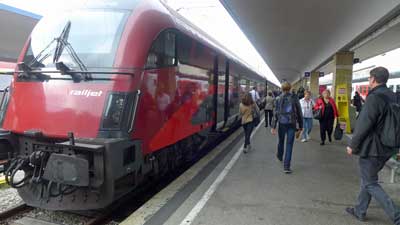
Single-country passes are still available and they MIGHT be good value for you, but it depends on which country and how much traveling you’ll be doing. If you plan on going all over a larger country such as Germany, France, or Spain, and especially if you like to make plans as you go, a Single-country pass for one of those might be your best deal. On the other hand, smaller countries (such as the Netherlands) or countries where train tickets are already fairly cheap (such as Italy) might be harder to get value out of. Long story short, for single-country passes you really need to check fares of the places you plan on going and see how they add up compared to the pass.
>>>Check prices for Single Country Passes
Eurostar (between London and Paris or Brussels or Amsterdam) tickets are now included for Eurail Pass holders for a €30 reservation fee
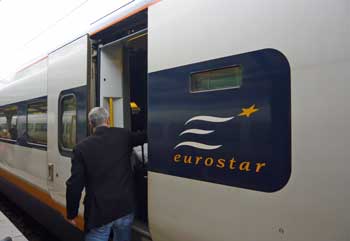
Our recent tests show that Eurostar fares one-way from London to Paris can be as low as €49 if you book about 3 months out, or as expensive as €214 for the same seat if you wait until the day of travel to buy. Round-trip/return tickets can be even cheaper if there is a promotion running.
>>>Check Eurostar prices
If you are on a really low budget, a Eurail Pass isn't a good idea
Here’s the thing. As we’ll discuss below, there are many potential benefits to Eurail Passes, and they will often save you money, but they do cost a lot and they only really save you money when traveling in the more expensive countries.
So let’s say you have a flight to Rome and then US$2,000 to last you a month after you arrive. Buying a Eurail Pass before you go would help you see a lot in that month, but you’d practically need to sleep in parks for your funds to last the whole time. You’d be better off moving slowly in the southern countries, or just in Italy itself, as a way to have the best holiday on your budget. You might also be tempted to use a Eurail Pass mostly on night trains so you can save the cost of a hotel or hostel, but those aren’t ideal for most of us.
The cheapest way to get around Europe by rail is to buy all train tickets online at least a couple months in advance. The fares are low, but they are non-refundable and non-changeable. See how far in advance you should buy train tickets to get those attractive fares.
If more than a little of your travel will be in eastern Europe, a Eurail Pass isn't a good idea
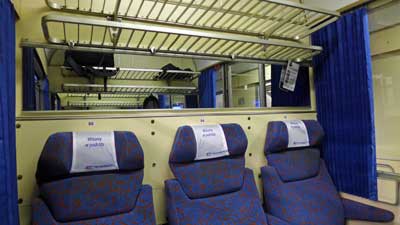
The good news is that the trains operating in this region, and the buses that operate alongside and/or where trains aren’t running, are quite cheap. So if any significant part of your trip will be into this region, a rail pass doesn’t make sense.
Basic types of Eurail Passes
Long gone are the days of the simple options, replaced by specialized passes that are meant to appeal to different styles. It should be pretty easy to figure out which is best for you, and then keep going down the page to decide if it’s worth it at all.
Eurail Global Pass – 4,5, or 7 days within 1 month or 10 days within 2 months
Until recently the minimum number of travel days with 10 days within 2 months, but now you can buy as few as 4 days within 1 month for about €200 to €250 (for first class). This can actually be an interesting strategy if you are planning many shorter and cheaper trips (like within Italy or Eastern Europe), and also 4 or 5 longer trips such as Berlin to Amsterdam. This way you can buy only 4 or 5 travel days and only use them for your most expensive travel days, and just pay as you go or buy cheap advance tickets for your other journeys.
Eurail Global Pass – 15 to 90 consecutive days
This variation allows for unlimited travel on the system for between 15 and 90 total days. They are really only a good idea for people who are certain they are going to travel very often, with much of it being in the north of Europe. The problem with them is that if you really try to get your money’s worth, you will probably ruin your trip by spending too much time on trains in general. On the other hand, if you will be in Europe for 2 or 3 months and plan on traveling around a lot, you can get a LOT of use out of a longer pass. The 3-month pass is around €900 so it’s literally about €10 per day. Imagine going back and forth between Berlin and Munich or Barcelona and Madrid for €10 per day!
One Country Pass
Obviously these are for travel within one country only. Again, they can be great deals if you plan on extensively moving around one particular country.
Where to buy your Eurail Pass
Eurail Passes are cheapest and easiest to buy online, primarily from two main sources which offer all the same products at the exact same prices:
This is a reliable company based in the Netherlands but with fulfillment offices in the US and Ireland. Price of Travel is a partner with this company, and if you use the links of this site we earn a small commission to help keep this site online. Eurail.com is usually cheaper than RailEurope (discussed below) by the way.
They were founded in the 1930s and are based in New York, but owned primarily by the French and Swiss rail companies. They offer free shipping (2 to 3 business days) on all orders of US$399 or more, although now that a mobile version is available, this is meaningless. Price of Travel is a partner with this company, and if you use the links of this site we earn a small commission to help keep this site online.
Reservations on European trains for rail pass holders
For most of the fastest trains between major cities you’ll need to reserve a seat even with a rail pass. It can usually be done just before you leave and the cost is usually around €5. Here’s a full list of which European trains require reservations and which don’t.
Reservations are required on all intercity (longer distance) trains in or involving France, Spain, Switzerland, and Italy. For most trains in Germany, Austria, Netherlands, Belgium, and most of eastern Europe, you can usually find trains that don’t require seat reservations. Often, if you don’t leave until after 9:30am or so, you can ride on any train with no seat reservation, but you have to research each leg to be sure.
How to determine which trains require seat reservations, and also get schedules
You can click on the link just above this section for a list of countries and their seat-reservation policies, but in some cases it’s actually a bit more complicated than that. For example, you can generally ride without a seat reservation on fast ICE (Inter City Express) trains in Germany if you depart after 09:30 in the morning. They do this to free up seats for business travelers who pay full fare, and they don’t mind filling up seats with rail pass holders on trains leaving a bit later.
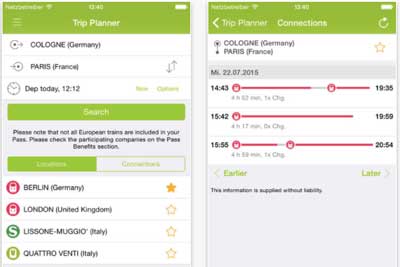
Night trains in Europe are making a comeback
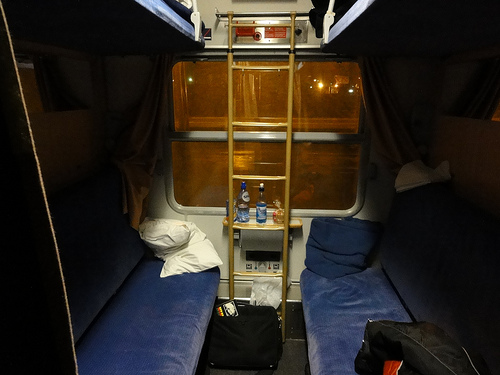
Fast forward to 2024 and night trains are not only expanding service, but they are very trendy. Some of it is nostalgia for the older way of getting around, but most of it is for environmental purposes combined with European hatred for the “low cost airline” experience with RyanAir and Easy Jet etc.
Personally I’m still not a fan of night trains because I find it difficult to sleep on them since they often get decoupled at interim stations in the middle of the night and then coupled onto other trains coming from other places, and I can’t sleep through any of that. But still, they are worth looking into and they are fun to try at least once.
A bit of warning that they tend not to be cheap and even if you have a Eurail Pass you’ll almost certainly want to book a sleeping cabin with a bunk or couchette, and that will come at an extra fee. On the other hand, if you are the sort of person who can sleep sitting upright in a normal seat, then that won’t cost any extra on most overnight trains.
Factors to consider when thinking about any Eurail Pass
Assuming you know which Eurail Saver Pass option is the best one for your type of trip by now, we’ll go over the main factors that should help you decide whether it’s the best idea for you.
Eurail Passes are best for standard ‘medium length’ journeys

However, if you are determined to travel between Rome and Paris, it’s about a 14-hour journey that will almost certainly be overnight. In this case, a cheap plane ticket is probably better, although taking shorter hops on the train is even better, so spend a day or two in Milan or Lyon on the way instead.
And of course, if you prefer to stop in various small towns between the big ones, then a Eurail Pass won’t pay off, except for the traditional kind for unlimited travel in a given period.
Eurail Passes are better value in northern Europe, France, and Spain, and poor value in Italy
Once you do a bit of research you’ll quickly learn that train tickets (and almost everything else) are much more expensive in Germany, Netherlands, Denmark, Sweden, Norway, and Finland than they are in Greece, Italy, Portugal, and Spain. With this in mind, the regional passes can make sense if you are spending time in the south, but the Global Passes almost certainly won’t. Train tickets in Spain used to be fairly cheap, but in recent years they’ve added new high-speed trains between the major cities, and these are quite expensive.
Unlike most other countries, Italy really subsidizes its train tickets so they are quite reasonable even on travel day, and very cheap if you buy a month or more in advance. For example, you can go between Rome and Florence for around €49 if you buy on travel day, and as little as €19 if you buy well in advance. In most other countries, fares are double or triple that much for similar rides.
So consider your planned itinerary. If more than half of it is in the Mediterranean countries then look into a Regional Pass or just buy tickets as you go, because they tend to be pretty cheap. But if you are planning on spending at least half your time in Paris and places to the north of it, then a Eurail Pass is probably a money saver because those tickets are expensive.
Trains are almost always better than planes
Flying sucks, even in Europe
Until you’ve experienced the joy of traveling around Europe by train you might be tempted to “maximize” your time by flying low-cost airlines between each city. This would be a mistake. In order to get truly cheap airfares you have to purchase long in advance, buying non-refundable tickets. You might also have to commit to flights in the very early morning or in the late evening, because cheap tickets on convenient flights sell out quickly.
And again, most European airports are around an hour outside of the city. They are often on the main train lines, which helps, but still you have to deal with the madness of security and also try to get there at least two hours early. From one city center to any other city center it’s about 5 hours minimum, even if they are close, and those are pretty miserable hours.
Train travel is a positive experience

Not only are all the seats comfortable on trains, but you also have an interesting view most of the time. Better still, trains deposit you in the heart of every city, which is usually the neighborhood with the cheapest hotels and food. It’s a wonderful feeling to step off a relaxing train ride, buy a hot dog or sandwich at a local shop, and then be in your hotel room only about 10 minutes later.
Eurail Passes are better than train tickets alone
As someone who enjoys the process of crunching numbers and looking for value, I have to also mention that I’d buy a Eurail Pass even if it seemed like it would cost a bit more than the individual tickets. With a pass you get an extra element of freedom that is worth a lot more than you might expect until you’ve used one.
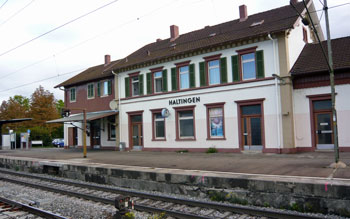
Let’s say you are heading from Amsterdam to Hamburg tomorrow morning. The 09:00 train you planned for might seem a bit ambitious after a long night out, so you can instead opt for the 10:00 or 11:00 train. As long as you walk into Centraal Station 10 or so minutes before departure, you are on. If you are flying you can’t change your ticket, and if you are buying train tickets as you go you have to be in line at the international desk at the train station at least 30 minutes early, and even then you might miss it if they are busy.
Freedom and getting to feel like a big shot
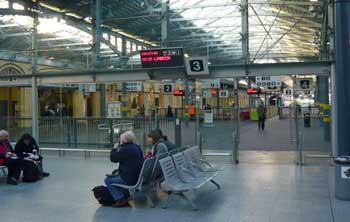
Let’s say you are staying at a hostel in Brussels, and two groups of new friends suggest that you go along with them to their next stops. One group is going to Bruges, which is a short and cheap journey, so you can join them by buying individual tickets (unless you have the unlimited pass, making it free). Then you restart your trip from Bruges, on to your next destination. The other group is headed to Berlin on a night train, which is long and expensive, but with a Eurail Pass you don’t even have to think about the cost. On you go, just like a rich person.
Buying a Eurail Pass is great for those who might run out of money
We all know people who keep meticulous track of every penny they spend, and who are always putting money away for a rainy day. And we all know people who can take a US$100 “entertainment fund” and burn through almost all of it in just a few hours. For the first type of person, a Eurail Pass can help you keep track of expenses, but it’s really the second type of person these are best for.
It’s sad to hear about people who have big plans to see their dream destinations, but they run out of money for transportation halfway into the trip, so they have to just stay put until they fly home. It happens. Locking in your major transportation costs before you leave home, and probably saving money in the process, is a wise move for anyone who isn’t as disciplined as they’d like with their money.
>>>Check prices on Eurail Passes
Bottom line: If you want to keep travel costs down, your choices will usually be a Eurail Pass or buying tickets at least a month or more early
In the last few years, almost every long-distance train ride in Europe has switched to a pricing system similar to low-cost airlines. In other words, tickets go on sale 2 to 6 months ahead of time at very low prices, and they keep getting more expensive as the train fills up and the date approaches. For most trips where a rail pass is possible, this is how things stack up:
Cheapest possible way: Buy advanced (non-refundable, non-changeable) train tickets at least 30 days in advance
Next cheapest way: Buy a Eurail Pass and make seat reservations as you go, usually only a day or less in advance.
Most expensive way: Buy train tickets as you go, or less than a week in advance.
Thinking about it this way should make the choice a bit easier. If you are the type who likes to plan each day and travel segment long before you even leave home, then buy tickets online for the best prices. This can be the best strategy for most shorter trips (10 days or less) because you simply don’t have enough time to change many things as you go anyway.
Buying a Eurail Pass won’t be quite as cheap, but you are buying a LOT of flexibility with the extra money. If you dream of making up your plans as you go, or even making up your plans just a few days in advance, this is almost always your best bet.
But if you wait too long, and just show up looking to buy train tickets as you go, they are going to cost a fortune. As recently as only a few years ago all seats would be the same price on many rail systems, so you could always just wing it. When each country computerized its rail systems so they can sell advanced tickets cheaper, they also had to keep track of seat reservations, so the whole pricing structure had changed to favor advanced ticket buyers and rail pass holders over those who’d prefer to just hop on any train as it is leaving the station.
Have a rail pass or itinerary question of your own?
It wasn’t planned but scores of people began asking me rail pass and itinerary questions at the bottom of this article and a few others. I’m happy to keep answering them and now I’m trying to organize them better as well so they are easier for other people to find.
If you have a question about specific types of European rail passes, please ask it in the comments below.
But if you have a question more about a European itinerary or other non-rail-pass questions, please click over to the European itineraries Q & A article and ask in the comments of that one.

You, sir,are a very helpful individual! If I may pry your mind, as a married couple (over 26) from the States we are flying into Milan June 20th and flying home June 28th. 9 days, not much. Our itinerary is controlled by concerts to which we have tickets, occurring on the 20th, 22nd, 25th in Milan, Trieste, and Vienna, respectively. Between Milan and Trieste we will make quick stops in Verona and Venice. Between 22nd Trieste and 25th Vienna we wish to climb a mountain in the Dolomiti near Bolzano. A night train would be necessary to Vienna. Salzburg would ideally follow Vienna on the way back to Milan. We aren’t as much into traditional sightseeing as many are, so the compressed nature of our trip doesn’t concern me much. It seems, by your general guidelines, that a Eurail Pass for 3 countries (Italy and Austria aren’t offered together) is not our most economical option. We do not want to fly at all, nor do we wish to stand in any queues beyond all necessity. Can the rail tickets be purchased online ahead of time? Do you then have to queue up to collect? Flexibility is very attractive as the weather could ruin many of our perspective plans, and we may be invited to join others. Given these considerations, and the addition of the ease of one central rail timetable in english, I am still considering purchasing a pass. Does this sound like a good idea? It’s hard to judge the intangibles and I realize you can’t decide for us, but I wonder if you have a gut feeling one way or another.
Levi,
I understand what you are asking and it is indeed a tricky situation. In most of Europe, the individual tickets are so expensive if you buy them on the travel day that a rail pass would save money and also allow you to make last minute decisions. But in Italy, the train tickets are rarely expensive enough to justify a pass, and an overnight train to and from Vienna would also be reasonable (US$69 each in 2nd class or US$97 in a bunk) compared to what you pay daily for a pass (and with a pass you still have a pay a supplement for a bunk/couchette on a night train).
As an example, the train from Venice to Trieste takes about two hours, and if you buy tickets a month or more in advance, you can get them for US$13 each in second class. If you buy them on the day, or even the day before, they will be US$30 for the same seat. However, the US$13 ticket is non-refundable and can’t be used on any other train, even the same service an hour later. Now, assuming that your main plan is mostly set, it could be wise to just assume that’s what you will do and buy all the train tickets ASAP from italiarail.com. The other tickets will probably cost at least a bit more in advance, but they will all be fairly cheap.
So even if you decide you want to change your plans once you are there, then you can buy the tickets as soon as you make that decision. If you end up changing most or all of your plans, then a rail pass might have been a better idea. But if you stick mainly to your original plan, then the advanced tickets will end up your cheapest option by far. You could buy full-price tickets in advance, but there’s still a 30% penalty to change them within 24 hours of travel, so they aren’t as flexible as you might prefer.
These online train tickets in advance are pretty new in Europe and I haven’t done it myself in Italy yet. I know in some countries they have ticket machines in each station where you just slide in the credit card you used and enter a little code that they email to you, and the tickets come out. But in Italy, you might still have to go through the ticket queues to pick them up. Fortunately, you could probably pick all of them up on your first stop.
Based on what you seem to have in mind, I think the above plan is better than a rail pass for you. Hopefully this helps, and let me know if you have any other questions. -Roger
Thank you Mr. Wade, your diligence is appreciated! I’m going to have to look around this site some and see what else is happening!
Hey Roger,
Thanks for the article. My friend and I, both 27, are traveling to Europe for the first time for all of June and July this year. We are thinking right now that we will stay for a month in Barcelona and travel to some of the more western and centrally located countries for 3 or 4 day trips and then stay in maybe Germany or Italy for a month and see some of eastern Europe on that leg of the trip. Planning is not our strong suit so I like the idea of the global saver pass and having the freedom to choose when and where we want to go without much advanced notice, but I don’t want to be wasting money if there are cheaper ways of traveling with a little bit of planning. The 2 month global saver pass is $1,577, do you think that is my best bet or would you recommend something else?
Thanks!
Tom
Tom,
We’d need to see a more specific idea of what you have in mind with those side trips, but my first hunch is that a 2-month Global Eurail Pass would not be good value for you. Assuming you want to do things as affordably as possible, you might find that flights or even buses are cheaper than some of the high-speed trains in Spain. Also, it obviously depends on how far these trips would be. For example, Barcelona to Valencia isn’t too expensive of a train ride, but Barcelona to Seville is.
In Germany they have these weekend train deals where up to 5 people can travel on Saturday or Sunday for something like €39. If you timed it right you could travel a lot on that special deal. And going from Germany to, say, Prague, is a relatively cheap train ride (when purchased in advance from bahn.de). Generally, when you go into the former Eastern countries, the fares drop (and the service does a bit too).
On the other hand, if your main goal was to see as much as possible in those two months, you could really use the hell out of a Global Pass. If you were planning at least 20 train journeys in those 60 days, and if most of them are at least a few hours in length, it probably would be good value to get the pass. You will have to also pay for seat reservations on many trains, and those average about €5 each. But still, it would be really fun to know that you could go just about anywhere in that part of Europe for no additional cost (other than the €5).
So it depends on how many trips you intend to take. Again, there are some cheaper ways to get many places, and you might decide you don’t like spending every third day on a train. But it could also be great to be able to go almost anywhere without worrying about the travel cost. -Roger
Hi Roger,
You do a wonderful job here. I couldn’t help but ask your advice!
Here is our trip plans so far:
Rome for 3nights
Rome to Venice for 1 nights
Venice to Munich for 2 nights
Fly to athens/Greek Islands for 4 nights
Fly to Vienna for 1 night
Vienna to prague for 2 nights
Prague to Berlin for 3 nights
Berlin to Amsterdam for 2 nights
Then fly to London.
What do you think? Is a eurail pass the best option for getting between these places? If so, which one?
Thanks!
Jo,
This itinerary looks pretty rushed. Vienna is a very large city to try to appreciate in one afternoon and one morning, but of course it can be done.
The Rome to Venice train fare won’t be too high, especially if you buy it online in advance from the Italian Rail site. Venice to Munich by train takes about 8 hours, so the arrival date won’t be a sightseeing day, although the journey itself should be enjoyable.
The Berlin to Amsterdam train is on the expensive side, although it won’t be too bad if you buy it in advance from the German Rail site. You aren’t really taking enough train journeys for a Eurail Pass to be good value, so you’ll be better off just buying those few tickets in advance if you can. You might also consider taking the Eurostar train from Amsterdam to London at the end. Basically, you take a fast train from Amsterdam to Brussels, and then transfer to the Eurostar itself to London, and you can book the whole thing through Eurostar. It’s a bit faster than flying when you add in all the wasted time getting to the airport and waiting and all that. And it should be a bit cheaper if you buy well in advance too. That train is not part of the Eurail system, by the way, so a pass wouldn’t help there either.
It looks like a great trip overall, although I’ve a feeling you’ll be exhausted towards the end. -Roger
Hi Roger,
Your site is extremely helpful as I have never traveled to Europe before. My boyfriend and I are taking a 2-3 week trip in April (not sure of exact dates at each location) but looking to visit:
France:
-Paris
-Cannes
-nice
-marseille
Spain:
– Madrid
– Valencia
– Granada
Portugal:
-Lisbon
-algarve
-sintra
– Azores
Trying to do everything by train &/or bus. Is a Europass worth doing or should we just pay as we go?
We’re also both 26.
Thanks so much for your insight!
Ashley,
I’m always happy to hear this stuff is helpful. You’ve got some unusual choices here, and even in 3 weeks I think this is ambitious. I’ll discuss some notes with you and then once you are sure of where you want to go, I can help you sort out the best methods.
Since this is your first trip to Europe, I urge you not to rush in and out of Paris. The city really does live up to the hype, and I’d recommend at least 3 or 4 nights there, especially keeping in mind the jet-lag factor.
Since you mention buses as a possibility, I’m going to guess that you are a fellow budget traveler (rather than a big spender). With that in mind, you’ll want to stay in Nice and visit Cannes as a day trip. It’s about a 30-minute train ride and you can see the main sights in Cannes in 4 or 5 hours of walking around. Nice is actually quite nice on its own, and it has a far better infrastructure for budget travelers. You also might consider a quick day trip to Monaco, which is only about 20 minutes from Nice by train, and it’s actually much more dramatic and interesting than Cannes at first glance. So maybe 3 nights Nice with day trips should work well.
Marseille is an unusual choice for a first trip. If you have a specific reason to go there (family or a museum you want to see or something) then I’m sure you’ll enjoy it. But it’s not really a tourist city, and it’s not typical French, for better or worse. It’s a large port city with strong northern African influences and not many checklist attractions.
Now on to Spain, it’s also surprising that you are planning on skipping Barcelona (and almost certainly going right through it) on your way to the less touristy Valencia, or Madrid. Again, if you have a specific reason to visit Valencia, then great, but for a first trip to Spain I’d recommend both Barcelona and Madrid and that’s it. Both are really nice and very different from each other. Granada and its Moorish influences are interesting, although not even close to the same league as the big two.
Lisbon is really nice and generally underrated, so I’m glad you are heading there. Sintra is a small town just a short train ride away from Lisbon, so most people just go for the day to see the castles and such, and one day should be enough.
The Algarve is mainly a beach resort for Europeans with a variety of towns of different sizes. I stayed in a town called Tavira and liked it a lot, but I’m not sure it’s worth a big detour to get there and back.
The Azores, as I assume you know, are islands that are a bit over 2 hours away from Lisbon by plane. A round-trip from Lisbon will cost around US$300. I haven’t been there yet myself, and the place does sound interesting, but unless you have family there or something, I think I’d recommend saving that for another trip so you can spend more time in the kick-ass places you are already visiting.
All of that said, a Eurail Pass might be helpful for what you have in mind, but it wouldn’t save you much money most likely. The only one that would work would be a France and Spain regional pass, and those start at only 4 or 5 travel days. The problem is that for only 4 or 5 travel days, the pass will cost in the US$250 to US$320 range, plus you have to pay a bit more for seat reservations. The individual train tickets might cost a bit more than that, but not by much. If you buy the train tickets online at least a month or two in advance you can get the best prices, but only if you buy on the official rail websites of each country.
You’d save the most money by taking buses, but in this part of Europe they are quite a bit slower than the high-speed trains you could take instead. If you were on a 2-month trip it might be worth it to save money by traveling slower, but on a fast trip like yours I think the fast trains are the way to go.
Think a bit about the ideas above, and you might consider a couple changes to your itinerary. Either way, once you are more sure of where you want to go, I’ll be happy to help you plan it if you like. -Roger
Hi Roger,
We will be traveling to Italy & France this June. It will be our first time traveling to Europe and I’m not sure if it would be cheaper to fly from one country to another or take the train. We plan to spend a week on each country and it would be two adults and a teenager. Another thing I would like to know is what towns do you suggest to see in Italy other than Rome? and the best way to get to them?
Thank You!
Gabbby,
You’ll probably want to take the train, assuming you want to see something in France other than Paris. I’ve actually gotten this question before so I wrote a whole post with my recommendations for a 2-week itinerary in France and Italy.
Have a look at that, and it should at least give you some ideas of where you might want to go. If you do go from Paris to Nice and eventually down to Rome, you might still want to fly back to Paris on a low cost airline rather than going back on the train. Feel free to follow up with any more questions. -Roger
hi
i am traveling to spain for 20 days i have bought the spain eurorail pass all i wanted to ask is that should i make prior reservations for AVE or should i directly by tickets at the station
Sahii,
For the AVE trains in Spain, you do need to make seat reservations even if you have a rail pass. The reservations cost €10 each on that train, and in almost all cases you should be able to make the reservation shortly before the train leaves. However, if you are traveling during summer and especially on busy days, you might want to make the seat reservation at least a day in advance. I generally like to reserve the day before, and that way I can get to the train station just before the train leaves, and I don’t have to wait around in the queue with my luggage and all that. -Roger
Hi Roger, love the site, the price guides for European cities have been really great in thinking about our trip! It is sort of a Eurail pass question, but mostly a direction one and I wasn’t sure what article I should ask it on.
Basically my partner and I (Who will have to buy interail)are planning rather far in advance. But right now our trouble is deciding what direction is logical and economical. Our trip will be roughly 9-10 weeks. We want to have flexibility to go where we want, we have a few cities on the must do list but the others will just be what we feel is affordable and doable in that time. We plan to start our trip by flying into Barcelona from Tampere, Finland and see Barcelona before heading down to Valencia for La Tomatina 2015. From here we just don’t know how we should continue, with a train pass in mind (likely 15 days of 60 and a bunch of weird ones for him) We would like to see a little more of Spain, Italy (particularly Florence and Rome), all regions of France (Strasbourg is a must city), Interlaken, Prague, Hamburg, Munich, Berlin, Vienna, Bratislava(maybe), Budapest(Maybe) Amsterdam, Copenhagen, Luxembourg and then we would like to tour the UK and Ireland so we want this to ideally be at the end or beginning as it doesn’t play into a pass. We would also like to try and see some Oktoberfest without having to double back too much. (I thought maybe trying to “finish” here and using trains (or buses?) to travel back through Poland, Lithuania, Latvia and Estonia to catch ferry home – but means the UK pass would be in the middle of trip? It would not be too expensive to get from Munich to Tallin on trains though? or maybe a second smaller pass?) My partner is kind of set on seeing a bit of the Baltic states, maybe also Krakow and would also like to see Sweden and Norway. I would love to see some fjords but I feel like maybe its a trip best done later with Finland as our base.
Any thoughts on our passes too, especially on trying to make them compatible with each other? We will be doing quite a lot of long distances and we can buy tickets for shorter trips, seems it works better that way than buying the unlimited.
Thanks so very much!!
Julia,
Wow, this sounds like an epic trip. It sounds like a Global Pass would be good value for you, and hopefully the other passes for Europeans match the benefits on that route. There is so much there that I am not sure where to start, or how much I can really help. A few notes…
I’d skip Bratislava but not Budapest. And I love Copenhagen, but it’s a long way there and back on the train, so you might even be better off flying there from Finland before or after the rest of the trip.
From Munich to Estonia it should be fairly cheap on the ground. The trains through Czech Republic and Poland are good and affordable, and once you get into the Baltics I believe buses are the better option, and still quite cheap. So you wouldn’t want to use any rail pass in that area.
And forget about a UK rail pass as well. They are not good value unless you want to criss cross Britain a few times without planning far in advance. The trick there is to buy your train tickets online at least a few days, if not longer, in advance. If you do that they’ll actually be way cheaper than what you’d pay for those same journeys using a rail pass. And again, the only downside is that you have to buy them in advance or you might pay a fortune if you buy them on the day.
Train tickets between the famous Italian cities are fairly inexpensive, especially if you buy them online at least a few days in advance. So I don’t think I’d use a Global Rail Pass for those journeys.
Overall it feels like the full plan you mentioned might be too ambitious to really be enjoyed. With 10 weeks you should have enough time to go just about everywhere, but when you are actually in the midst of it you will probably prefer to go it bit slower. You’ll also want a break or two in there, where you might rent a little apartment for a week in a cheaper city just to catch your breath.
So with the above in mind, see if there is a logical route as the main middle of your trip where you’ll be connecting the main cities you want to see. Once you have the first draft of an actual route figured out, it should seem less overwhelming and you can begin tweaking it to keep costs down and make it as efficient as possible. This really sounds great and I’m happy to give you my thoughts as you continue planning. -Roger
Thanks heaps Roger for those thoughts! We have revised and refined the trip a bit and was wondering if you had any more thoughts on it now.
Mostly just keen to get the most value out of the transport we take as I feel the rest is common sense and living to your budget. We have decided to split it almost 50/50 with couch surfing and hostels in order to give ourselves some extra funds to stay somewhere a bit nicer (or private to rewind for a bit)
We are now thinking to tick off the UK and Ireland first with a rather set itinerary and pre-booked train tickets. We would like to visit family in Surrey, go to Cardiff, Edinburgh and then off to Dublin and possibly Cork. Due to the costs here, we would be unlikely to exceed 2 weeks. Then we will fly to Barcelona or Valencia, from whatever UK city works out to be cheapest. Any suggestions for this?
We will either explore Barcelona before or after La Tomatina, and Madrid is still a possible visit.
So the beginning of our pass would be from wherever we land to Valencia or if we land in Valencia, it will be from Valencia to Madrid or Barcelona.
From Barcelona, we wish to visit the The Loire Valley with a possibility of somewhere in the Pyrenees on the way.
Then onto Paris
-> Brussels (Only shortly)
-> Luxemburg
-> Amsterdamn
-> Hamburg/Denmark
-> Frankfurt
-> Munich (Oktoberfest) As you can see at this point, we are about 4 ish weeks into the trip (as La tomatina is set and so is oktoberfest), is this too ambitious right now?
-> Strasbourg (Likely to stay here a while with possible day trips)
-> Through Switzerland, maybe day or one night stop
-> Milan
-> Nice (Monaco, Cannes)
-> Florence
-> Rome
-> Either further south or across to possibly San Marino
-> Venice
-> Vienna
-> Budapest
-> Prague
-> Berlin
-> Warsaw
Then up through Lithuania, Latvia and Estonia and back home.
We would like the train pass to help us out with the big trips. I have struck a bit of luck this year and have managed to find some family that will house me for the year so my funds towards the trip are a bit higher now. This means that after Munich, we really can take our time, would just like to be back home for Christmas :)I hope that with doing the cheaper countries last we can spend a little bit more time chilling, not worrying about how quickly the money is dissapearing with food etc, like other cities may do. But if it still seems like too much, which cities are the most logical to cut out for another time?
Some concerns I have is that the 2 month pass is likely to expire before we do the rather long Praque-Berlin, Berlin->Warsaw routes.
I think its quite possible to work it into just a 15 day pass, with buying the smaller, cheaper trains separately.
I am also still having problems with the Interail pass. Would two One month continuous be smarter than 3 10 days in 22 passes? Or even 2 10 days in 22 passes? With some strategic planning going on as to when to validate each of them? This different pass thing is a real bother for me right now.
I would also like to see a bit more of france and germany but know they are expensive countries. Any day trips that are reasonable that you would recommend that might fit into the plans?
Is Denmark still not doable in that sort of time frame suggested? It is rather high up in the want to see list as I have been before and absolutely loved it and want to see even more.
Besides day trips and italy, any other routes that are better to leave to single tickets and save a day on the pass? Also is it possible that I am venturing into getting better value and freedom out of a continuous pass?
Again, THANKS SO MUCH. I am loving all these messy thoughts start to come together in sequence and you are helping immensely with both your site and feedback.
Julia,
Okay, here goes…
I think starting with the UK and Ireland is wise. Again, if you buy those train tickets a month or more in advance, they will actually be strangely cheap. In my experience, the National Rail site is the best for Britain.
From England to Spain you should have no problem getting a cheap flight if you look at Easyjet or Ryanair (or a Spanish carrier) and book as far in advance as possible. My hunch would be that they would all be about the same price if booked far enough in advance. The longer you wait, the more expensive they will be. Easyjet is nicer than Ryanair, by the way.
Not sure if we discussed this before, but Frankfurt isn’t one of Germany’s better tourist cities, unless you have a specific reason to go there. There are many more interesting options in the area.
As you might know, accommodation during Oktoberfest is in extremely high demand, and even hostels will triple their prices for those 3 weeks. Sort something out as early as possible for the best deal.
I agree that saving the cheaper countries for the end is wise. You can get by on less than half in Poland than in Germany or France. Prague to Berlin and Berlin to Warsaw are actually among the cheaper journeys in Europe of that length. For example, you can get a Saver fare from Berlin to Warsaw for only €29 per person if you book well in advance on the bahn.de website. The Prague one is probably the same. Once you get into the former Eastern Europe, train fares drop a lot.
I don’t know much about the Interail Passes for European citizens, unfortunately.
Both Germany and France aren’t as expensive as you might fear, as long as you are out of the bigger cities (or in the former eastern Germany). Still, they aren’t exactly cheap either. When you are actually on the trip I’m sure you’ll be hearing about day trips or other places you might visit from fellow travelers at the hostels or couchsurfing hosts. One in Germany to consider is Rothenburg Ob Der Tauber, although I recommend staying overnight rather than just during the day because (like Venice) it’s packed in the day and wonderfully empty every evening.
I agree with you about how cool Denmark is, and if you are on a Eurail Pass I’d go for sure because it’s a very expensive trip otherwise and it’ll feel like you are getting great value. Whether or not you’ll be in the mood to go that far at that point in your trip is something for you to decide as it approaches.
Once you buy the Eurail Pass, you’ll obviously see how much each leg costs, as in 15 rides for, say, US$829 would mean they cost you US$55 each, plus seat reservations when needed, which are usually around US$7 each. So if you see a trip you want to take and the ticket would cost, say, US$90, then using the pass is worthwhile, assuming you have enough travel days to get you to the end. But if the ticket is only, say, US$40, then it’s probably better to buy that one as you go, unless it looks like you’ll have extra days at the end. You are obviously a meticulous planner, and I generally am too. However, I’m quite confident that once you are on the road, that most of these decisions will be obvious and pretty easy to make as you go.
It kind of sucks that these days there is a big difference in price between buying train tickets a month or two in advance and just hopping on trains when you feel like it. As of ten years ago, a Eurail Pass would allow total freedom, and all train tickets were the same price. So it’s more challenging now to be on a low budget, but you’ll figure it out as you go. Still, feel free to ask any other questions you have as your trip approaches. -Roger
My husband and I will be traveling to Europe in June. Our itinerary is as follows:
We will fly into Barcelona and spend a day there.
Then take a train from Barcelona-Madrid. I’m having trouble finding routes to get from Madrid to Paris. We wanted to stay in Paris for about 3 days and then go to Italy. From Italy, we were going to visit Rome, Milan, Naples, and Venice. From Italy, we wanted to visit Greece, but I was also having difficulty finding a route from Venice to Greece. I’m assuming that we will have to take a ferry. I’m trying to decide if a Global Pass would be worth it or would it make more sense to buy a Regional Pass? Also, are you aware of specific maps that have routes and times for the trains?
Loren,
If this is your first time to Barcelona then it’s a shame you’ll only spend one day there. It’s very different from Madrid and many people actually prefer it.
From Madrid to Paris it’s cheapest (and definitely fastest) to fly. By train the only (good) way is to take the high-speed train back to Barcelona and then take the new high-speed train from Barcelona to Paris, which only started operating a couple weeks ago. The problem is that those two train journeys together will take 10 hour or so, and both trains are quite expensive. Especially with this much time before you go, you should really think about flying on one of the many low cost carriers. You can fly on Ryanair or Easyjet (Easyjet is much better) for around US$65 if you book soon, and the flight is only 2 hours and 10 minutes.
Your options from Paris to Italy are similar. By train you’d take a high-speed train from Paris to Nice (and you might want to spend a couple days there) and then from Nice to Milan. Once you get to Milan you’ll find that getting to the other famous Italian cities is fast and relatively cheap on the train. If you book way ahead of time and buy the tickets on the official Italian Rail website you can get even lower fares. But Paris to Nice to Milan is another half-day (10 to 12 hours) journey, so if you don’t want to stopover in Nice, then flying to any of the main Italian airports is way faster and probably cheaper as well.
I’m not aware of a full Europe rail map. Generally, pretty much every major city is connected to the nearest major cities by rail. The only complications are like Paris to Milan, where it’s so far that you have to go through a few major cities that aren’t in a straight line. So in other words, you can get from anywhere to almost anywhere in Europe by train if you skip through the major cities along the way. And if you don’t see a ticket that goes all the way, you sometimes have to divide it into segments where you change trains in a big city along the way. -Roger
hello 🙂 I’m planning to visit Vienna this May. However I do want to maximize my trip by visiting other cities/countries not too far away from Vienna; possibly 3 hrs max one-way. Which cities & which pass would fare well for me?…
Angelissa,
Within about 3 hours of Vienna by train, your main choices are Budapest and Salzburg, which are both highly recommended, and both are very different from Vienna. You could also go to Brno, Czech Republic (I haven’t been there but I’ve heard good things). There’s also Bratislava, Slovakia, which is basically a suburb of Vienna. Being honest, Bratislava isn’t too interesting, although it’s cheaper than Vienna, which is nice.
Whether a rail pass would work for you would depend on where you decide to go. There is an Austria-only rail pass that would be good if you want to go to Salzburg and maybe another Austrian city or two. Or you can get a regional pass that adds one or two more countries for only a bit more money. Again, it all depends on how many days you’ll want to take the train, and how long each ride is. It’s very possible that you’ll be best off just paying as you go, or buying tickets in advance from the official Austrian Rail site if you are sure of your itinerary. -Roger
Hello Roger,
My wife and I (both 62) will have the following itinerary in July/Aug. 2014:
Dusseldorf to Amsterdam
Amsterdam to Rotterdam
Rotterdam to Bonn
Bonn to Gengenbach, Germany
Gengenbach to Munstertal, Germany
Munstertal to Montreux
Montreux to Chur,
Chur to Tirano, Italy
Tirano to Waldshutt-Tiengen, Germany
Waldshutt-Tiengen to Frankfurt
Would a 15 day Eurail Global Pass (15 days within 2 months) be an advantage over just buying tickets as we go?
Thanks
Mark,
A Global Eurail Pass would be overkill for a trip like this, but the good news is that a 4-country Select Pass is cheaper and will be perfect. It comes in a 10 Days in 2 Months option, and with 2 traveling together you qualify for the 1st Class Saver version, which saves 15% on both passes.
You might even think about the 8 Days in 2 Months version, and then pay cash for your two shortest journeys. Amsterdam to Rotterdam is short, as is at least one of your legs in Germany. By paying for those two trips as you go the grand total will be at least a bit less. When you use the form in the main body of this post, just put in the 4 countries that you’ll be visiting and you’ll see several options that are much cheaper than the Global Pass.
Let me know if you have any other questions. -Roger